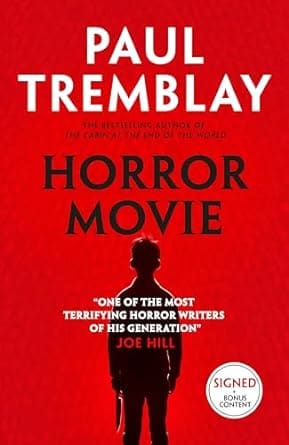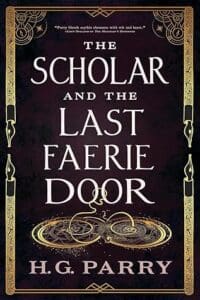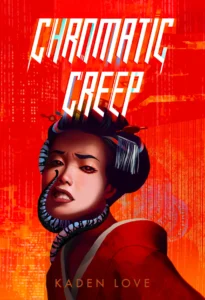
Hell has never been so chilling
Synopsis
Summer, 1993 – a group of young guerrilla filmmakers spend four weeks making Horror Movie, a notorious, disturbing, art-house horror film. Steeped in mystery and tragedy, the film has taken on a mythic, cult renown, despite only three of the original scenes ever being released to the public.
Decades later, a big budget reboot is in the works, and Hollywood turns to the only surviving cast member – the man who played ‘the Thin Kid’, the masked teen at the centre of it all. He remembers all too well the secrets buried within the original screenplay, the bizarre events of the filming, and the crossed lines on set.
Caught in a nightmare of masks and appearances, facile Hollywood personalities and the strangeness of fan conventions, the Thin Kid spins a tale of past and present, scripts and reality, and what the camera lets us see. But at what cost do we revisit our demons?
After all these years, the monster the world never saw will finally be heard.
Review
Paul Tremblay has written another book, and once again you won’t know what to expect, and, perhaps unhelpfully, I am telling you to expect a masterpiece, his best yet, perhaps the defining horror novel of the decade, and as with all Tremblay art projects I can tell you so very little about this masterpiece, but god willing it won’t stop me trying.
As usual with Tremblay, the first challenge (and I mean challenge in the best way, like finishing a jigsaw, not navigating your way to the shops without a stop-and-chat with an awkward acquaintance) is to work out the form of the novel. This time we have the star of a notorious “cursed” horror movie, twenty years on (Think Brandon Lee if he’d survived The Crow) narrating his audiobook to us, switching between recalling the original events of the filming of the movie and his experiences with being asked to be involved in a present day remake (or more correctly, reboot, as is pointed out). Tremblay has a lot of fun here skewering the film industry. At one point a director talks about using both teenage actors and actors who were teenage actors in the 90s and adds with a wink that they’ll be “killing nostalgia dead,” which neatly summarises much of the efforts of recent horror franchises.
But one narrative device would not make a Tremblay book, so in amongst our protagonist’s tales we are given the chronological events of the original cursed movie itself through reading the actual screenplay – the jewel in the crown of this novel, which I’ll come to in a second.
We are not told what exactly went wrong in the filming of this movie, we are left to slowly put the pieces together, knowing that the truth is coming by the end. This has the sense of inevitable doom – like being tied to a conveyor belt straight to hell – that his novel A Head Full of Ghosts did, but this succeeds in being even more chilling, as there is unusual discipline for a Tremblay novel here. Perhaps this is because we only have one narrator (albeit one as unreliable as most narrators in a Tremblay book). The only time we are not with them is when we are reading the screenplay, but that is not a new narrator as such.
The result of this feels like a tunnel we’re forced down; our seemingly honest protagonist (aren’t they all) relates a new scene from the past, replete with lashings of tasty foreshadowing, and then we switch to the indescribably sinister screenplay itself, and only come up for breath in the present day. It’s a claustrophobic narrative style, tight and fierce, and I felt like my arms and legs couldn’t move. As a disturbing horror experience, I’m not sure you can beat it.
Okay, I keep bringing up the screenplay. Let’s discuss it, and why it is such a genius device. To read a screenplay is not to be having the events narrated to you as if you are there. It is second hand. The thing that comes before the film. Yet reading it in this book, it feels like the events of the cursed movie are being played out. This is the ultimate narrative illusion, and is partly helped by a device cunningly explained at the outset whereby the writer of the screenplay was purposely fucking with the format; going off in tangents in ways that you just don’t get with a normal screenplay.
This, then, is a souped-up screenplay. It’s a meta screenplay. It will terrify you, but in one crucial scene – think of the scariest moment in It Follows, then think of the moment immediately before that moment – Tremblay will tell you what horror films are and what they mean to people, and he’ll give you the best five pages of the year in horror. Read it, come back to me, agree with me.
For all the terror and tight narration, Tremblay has a wide landscape he wants to paint here; perhaps his most ambitious of any of his novels: the experience of the horror film; its role in culture, its role in reality. One character speaks of:
…putting the idea of the movie, her movie, out into the world, planting it in people’s heads, letting it grow into a life of its own, calling it back fully into being.
But who is doing that? In most of Tremblay’s novels, it is the narrator that distorts reality. In A Head Full of Ghosts, the inability to trust the narrator is at the book’s heart. In The Pallbearers’ Club, we must oscillate between the self-denial of the memoirist and the beta reader. But here we are invited to question whether we, the horror book/film fan, are the ones who distort reality, not the narrator; whether us horror fans, with our love for film and love for horror, take the fictional into the real and warp the boundaries, and whether this might not be as beautiful as it is utterly terrifying. The director of the original cursed film at one point notes that
This movie will communicate emotional truths that can only be communicated by the language of film and of horror. If we do it right, the movie will speak to us now as it would’ve thirty years ago.
And anyone who understands horror films has felt this force; the pull behind the remake, the reboot, the pull of the original that ends in the kind of mythology that envelops certain films. When we watch a horror film, we must believe it in the moment for it to work – everyone knows that – but what happens when that bleeds out beyond the film itself? The consequences of this are significant for the main protagonist of Horror Movie, but what about us? That’s what I can’t stop thinking about after reading this book. Another character notes that
People can’t help but want their fiction and its players to be real…
…they may as well have been talking about me.
But then again, all that could be codswallop, because how can there be enough time in our swift lives to parse this book to the extent it deserves? To give you yet another quote,
The problem when you foolishly think one thing has meaning: you then think everything has meaning.
They must have been talking about a Tremblay book.
Overall, Trickster Tremblay has reached into his postmodern toolkit and brought us the defining horror novel of the decade: a terrifying love letter to the power of scary cinema. At one point we are told that “this movie is not for everyone. This movie is for some of us.” Perhaps, but this novel is for all of us who love horror, and it will echo down the decades.








I think a proper really frightening novel terrifies me far more than the film. Your excellent review brings to mind The King on Yellow, the play driving its readers or audience quite batty. As for It follows, I assume (hope) you were referring to the scene where the very tall man followed the friends through the door.
Best review of Paul Tremblay (who is wonderful) that I have read. Hope he reads it.
Thanks! And yes, I was thinking of the terrifying tall man door scene!